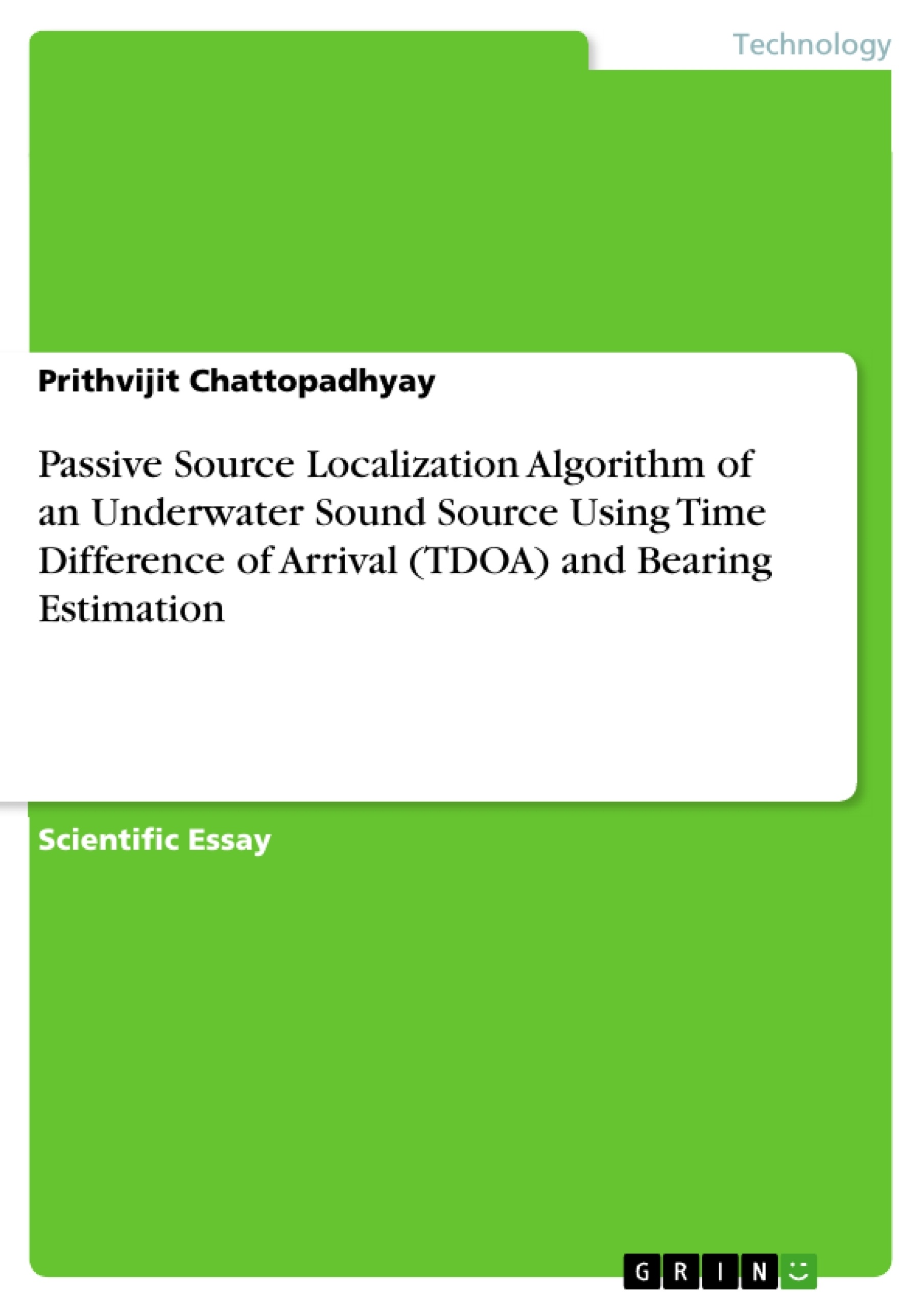The paper presents a method of localizing a sound source after TDOA analysis has been done. The localization is done by completely determining the coordinates of the source as a linear function of the distance of the hydrophone array from the source.
Frequently asked questions
What is the main topic of "Passive Source Localization Algorithm of an Underwater Sound Source Using Time Difference of Arrival (TDOA) and Bearing Estimation"?
This paper presents a method for localizing an underwater sound source using Time Difference of Arrival (TDOA) analysis and bearing estimation. The localization determines the source's coordinates as a linear function of its distance from a hydrophone array. The distance is calculated using a quadratic equation.
What are the key index terms associated with this paper?
The key index terms include TDOA, Bearing, Range, Hydrophones, and Passive SONAR.
What is the problem of passive source localization using TDOA?
The problems include ensuring the accuracy of the TDOA estimation and developing an efficient localizing algorithm.
What is the basic approach to solving this problem?
The basic approach involves forming equations based on the Cartesian coordinates of the sound source and hydrophones. These equations describe hyperboloids in three-dimensional space. However, this method can be inefficient for directly determining the range and bearing of the source.
How is TDOA estimation performed?
The generalized cross-correlation technique using phase transform (GCC-PHAT) is used to calculate the time difference of arrival. These TDOA give bearing estimation for far field approximations.
Why is a tetrahedral array of hydrophones used?
A minimum of four hydrophones is required for 3-D localization of the source in real-time. Arranging them in a tetrahedral array facilitates symmetrical localization.
How are the hydrophones arranged?
The hydrophones are arranged such that one forms the origin, with three perpendicular axes representing the z, x, and y axes. This configuration simplifies coordinate localization through symmetry considerations.
What does the localization algorithm involve?
The localization algorithm uses the bearing of the sound source and TDOA equations to determine the range of the source. Then it uses geometry along with estimated range to estimate location in cartesian coordinates.
How are the coordinates of the sound source determined?
The coordinates are calculated using equations derived from the geometry of the hydrophone array and the range to the sound source. The cylindrical radius is also solved.
What type of signals were used to simulate the results?
Chirp signals with initial and final frequencies of specified values were used in the simulation, with GCC-PHAT employed for TDOA estimation.
What do the simulation results indicate about the accuracy of the method?
The simulation results show small percentage errors, indicating the method is accurate for localization purposes.
What is the overall conclusion of the paper?
The linear model presented overcomes difficulties in hyperboloid formulation for passive source localization. By utilizing the geometry of the source-hydrophone triangles in conjunction with the bearing estimation accuracy can be achieved in real-time situations.
- Citation du texte
- Prithvijit Chattopadhyay (Auteur), 2014, Passive Source Localization Algorithm of an Underwater Sound Source Using Time Difference of Arrival (TDOA) and Bearing Estimation, Munich, GRIN Verlag, https://www.grin.com/document/281962



